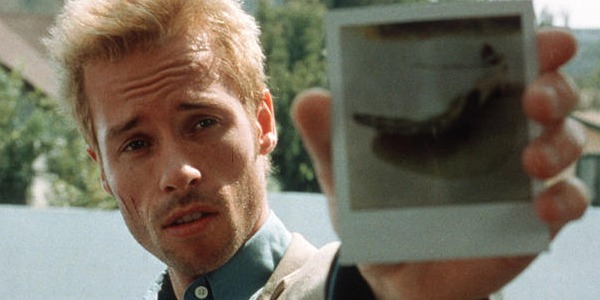The Beginners Guide: Christopher Nolan, Director

Zac Hestand earned a BA in Film from the University…
Christopher Nolan was born in London, England in July of 1970. He first became interested in filmmaking at the age of seven when his father purchased a Super-8 camera, and his childhood hobby led to a career of switching between low budget independents and large scale Hollywood blockbusters. Nolan is one of the top directors working in film today, but he did not study film. He majored in English Literature at University College London, but continued to develop his filmmaking craft at the school’s film club.
At the film club, he and other members would collaborate on short films, and discuss directors they admired. Nolan‘s biggest influence as an inspiring filmmaker was Stanley Kubrick. Both Kubrick and Nolan share a love of psychology, and psychological themes of human beings recur in their films.
Kubrick’s films covered psychological themes of obsession (Hubert Hubert in Lolita and sexual obsession found in Eyes Wide Shut) and dehumanization (recruits changing into killing machines in Full Metal Jacket and Alex DeLarge and his Droogs terrorizing London in A Clockwork Orange.) From his early shorts to the present, Nolan‘s films, like Kubrick, all deal with obsession, and after the release of Memento, added his own psychological element that differs from Kubrick: how characters grieve and cope with the loss of a loved one. Also, he will show that, like onions, there are many layers within the obsession of these characters.
*Might contain minor spoilers! Read at your own risk!
Doodlebug (1997)

Doodlebug is a three minute long, black and white film with no dialogue. It’s about a man (Jeremy Theobald), running through his studio apartment trying to kill an insect, an unseen one. At the end, he finally kills it, only it is not a bug, but a smaller version of himself. The man then gets smashed by an even bigger version of himself.
The obsession detailed is the man’s determination to kill the bug. He almost destroys his whole apartment, making a complete mess of it. He will not stop until the vermin is exterminated. This bug, as mentioned above, is a small version of himself, and he gets killed by a large version of himself. This is the first use of the concept the character/obsession are layers, which Nolan will reuse in full length efforts, most notably in Memento (with its use of layers of memory and secrets buried deep in the mind) and in Inception with the layers of dreams found in the human mind.
As for the reveal at the end, well, interpretation is up for the viewer to decide. As for me, I see the ending as the breaking of a bad habit. You try to break it, but once you end it, another one takes form and the cycle continues (I know it’s early, but comment below if you agree or disagree with that statement.)
Nolan will continue this theme of obsession and with layers of the character when he raises the funds for his first full-length film, which he shot on a budget of $6,000 over the course of one year (weekend shooting only).
Following (1998)

Nolan’s feature length debut stars the same actor from Doodlebug. In Following we see a man, Bill, with a different obsession from the previous film: he follows people. Bill is curious where these people go and what they do in their lives. He has a strict set of rules: don’t follow someone twice, don’t follow women into alleys, etc. Bill breaks his rule and follows a man more than once, and his cover is blown. The man he followed, Cobb (yes, the same name from a bigger movie he will make later), turns out to be a burgler, with his own obsessive set of rules.
Cobb becomes Bill’s mentor in breaking and entering, and his rules don’t involve much stealing, but more analyzing the people who live there. As Cobb says to his burgler pupil: “Breaking in, finding out about someone’s life, and who they really are.” Bill cannot leave Cobb. Bill grows obsessed with burglery, and throughout the film, attempts to improve his skills of the trade.
Unfortunately for Bill, his obsession clouds his judgement, and it is revealed that Cobb set him up for murder. Bill is now in jail, and Cobb disappears in the crowd. With Following, the characters become immersed in their hobbies, and their hobbies become their identity. What started as a simple routine for Bill, led to an exploration on the complexities of the subjects that he followed. Bill made the error that people were merely their hobby, once he got closer to Cobb, he removed a layer of him to show he is more than just a thief. People, which Bill would learn the hard way, are complex beings. Cobb is manipulative and uses Bill as a stooge. Once Cobb disappears, he will most likely continue the pattern on his next victim.
Nolan will use this method (characters that become the identity of their hobby/activity and layers of human complexity) with his next film and others to follow (sorry for the pun) where characters are faced with death, but they merge with their activities in order to cope with the loss of loved ones. It is with dealing with death and the many layers of grief, and the difficulty of how hard it is to move on, that Nolan will find this recurring thematic element that becomes his signature stamp on all of his future films.
Memento (2000)

Nolan’s US debut, Memento, is a psychological thriller about Leonard (Guy Pearce), a man searching for the killer of his wife. Leonard suffers from anterograde amnesia, a form of memory loss that leaves the victim unable to form new memories and suffers short term memory loss every few minutes. He is looking for the second attacker (he killed the first), who goes by the name John G. Leonard uses Polaroids and self-tattoos notes on his body to attempt to put the puzzle together.
The film is presented in a non-linear structure (as a way to represent Leonard’s fragmented and disorganized mind). With this non-linear format, we as an audience are presented with pieces to a puzzle. Each scene details both Leonard’s investigation, flashbacks of the incident and a story about Sammy, a former client of Leonard that had a similar disorder. As the film progresses, it is revealed what actually happened the night of his wife’s murder. Something that Leonard would rather not remember.
The reveal is that there is no second attacker. Teddy (Joe Pantoliano), a PI who has been assisting Leonard, is actually the police officer who responded to the call, and tracked down the killer. Leonard created the second killer, and gave the name John G. (a very common name) to keep the memory of his wife alive. He cannot accept she is gone and that he already got his revenge. To cope with the loss, Leonard becomes an obsessed detective, driving from town to town to find a man that does not exist. Teddy tries to get Leonard to move on, but Leonard burns the evidence and will forget the conversation took place, and continue to have his quest become who he is. Part of his identity, like Bill in the previous film.
By detailing memory loss, Nolan shows a story on how complex the human mind is with memory and what we have buried and repressed in those memories. As the puzzle is put together, he does not like what he sees. He remembers the event happening another way, not the way he wants to remember. Which is how a lot of memories seem to work at times. With the loss of a wife through murder, the next film will tie into the Nolan filmography by showing a child coping with the death of his parents, and like Leonard, he too has things that are buried.
Batman Begins (2005)

Batman Begins, his first big budget Hollywood film, Nolan would be the best choice to helm the origin story about Batman, a superhero grieving the loss of his parents. The film shifts away from the previous stylized versions of Batman, and instead focuses on the development of Bruce Wayne changing into Batman. The film is less an action picture and more a study of the psychological complexity of a wounded boy.
Bruce Wayne (Christian Bale) witnesses the murder of his parents as a young boy. Dissatisfied with the justice system letting the murderer walk, Wayne leaves Gotham to train with the League of Shadows, an organization led by the mysterious Ra’s al Ghul. Upon discovering the League’s plans to attack Gotham, Wayne attacks the group and returns to Gotham, where he begins his slow transformation into the caped crusader.
Batman has no superpowers, he is just a man in a mask and cape. This is a Nolan hero: he hides behind a mask because Wayne cannot move forward with his life. Through training with the League of Shadows, he released hidden (or to go with the term of the day, layers) feelings of anger, pain and fear. He is unable to channel these feelings as himself, so must use the persona of Batman to show the world the anger and pain he feels.
With the exception of Alfred, Wayne keeps his Batman activities a secret to everyone. He hides behind this new mask to cope with the loss of his parents, and his motivation for avenging their death becomes an obsession to rid the city of all criminals. He is unable to stop. Even as his feelings develop toward a childhood friend, the shadow of Batman weighs down on him. Alfred makes attempts to convince Wayne to move on (like Teddy to Leonard), but he can’t. This hobby/activity of vigilantism is not only his obsession, but his identity. Like Leonard, Wayne is unable to let go, and keeps on moving with his quest.
The next film will, like Memento, go back to the mind. The obsession will be on memory of the death of a wife. Only this time, the layer of human complexity will be on the world of dreams. As that film will explain, dreams come in many levels.
Inception (2010)

The film, Inception, gives Nolan the chance to use the name Cobb, like in his debut film. Like the debut film, this Cobb is also a thief, not of material goods hidden in closets, but information hidden in the different levels of dreams.
Cobb (Leonardo Dicaprio) and his associate, Arthur (Joseph Gordon-Levitt) perform corporate espionage by extracting information from dreams. In their latest assignment, they must plant an idea in the head of the son of a CEO, Robert (Cillian Murphy) to dissolve the company. In order to enter the world of dreams, you must face things buried in the subconscious.
Through the course of the film, we learn Cobb’s wife committed suicide while they were deep in a dream state, where they lived a full life together (even though in the real world they were out just a few hours). His wife had trouble telling what was real and fake, the confusion leading to her death. Cobb blames himself for not saving her. His wife’s “projection” pops up during his missions, causing Cobb to become distracted.
The dreams shown in the film are different levels of dreams. As we sleep, the deepest level of sleep is REM (Rapid Eye Movement), where the individual is in the world of dreams and will have trouble waking up. In each level, Nolan is again showing layers of the mind. All people dream, and at night, dream more than once. As we go deeper in the mind, we see things that are repressed. In the case of Cobb, his wife is deep down there, and is climbing up the world of dreams as if using a ladder. Cobb becomes involved in his work, and does not want to let anyone in on what he is feeling.
The projections appear because Cobb cannot let her go. These projections of his wife urge him to leave the real world and enter the world of dreams with her. A conflict in Inception is Cobb attempting to let go of his deceased wife, but can’t. His obsession with keeping her projection jeopardizes his work, and others around him. Unlike characters in Nolan’s other films, at the end Cobb is able to let go, and move forward with his life, which a lot of the other characters in previous films were unable to do (if you believe the top stopped spinning in the final scene).
Coming Soon!
This summer (with a US release date July 19th, 2017) will see the premiere of Nolan’s new film, Dunkirk. The film concerns the British Army surrounded by German forces during the Second World War, with a cast of Nolan regulars (Tom Hardy and Cillian Murphy) and new faces to his work (Mark Rylance, Kenneth Branagh and Harry Styles).
While it is too early to tell how the film will be handled, one thing will be certain: the recurring themes. The new film, like the others discussed, will feature characters that are obsessed in some form, and may be grieving the death of a loved one. As a War film, it is possible the film will show viewers the complexities of war and why we fight them. In which case, the new film will continue to connect with all the themes found in the films of Christopher Nolan. I, for one, look forward to his next masterwork.
Is there a movie I left out? Do you agree or disagree that Nolan’s films focus on obsession, layers of character and grieving?
Does content like this matter to you?
Become a Member and support film journalism. Unlock access to all of Film Inquiry`s great articles. Join a community of like-minded readers who are passionate about cinema - get access to our private members Network, give back to independent filmmakers, and more.
Zac Hestand earned a BA in Film from the University of Nevada Las Vegas, and MA in English from the University of Sheffield. He is currently at work on his first book.











